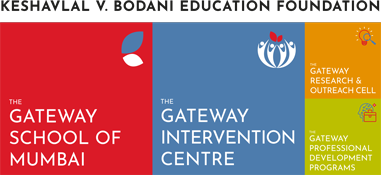Grandstand
Grandstand is a dynamic space where a diverse group of learners come together to socialise, collaborate, and share experiences. It fosters active participation through hands-on, meaningful, and relevant learning experiences, giving learners the opportunity to express their voice and make choices.
By taking initiative and making decisions, learners develop a stronger sense of motivation, interest, and accountability. Grandstand serves as a platform for learners to work cohesively within the Gateway community, promoting unity and building confidence.
Through this space, learners apply their knowledge, skills, and attitudes to solve real-world challenges and navigate situations collaboratively, both within the group and the larger community.
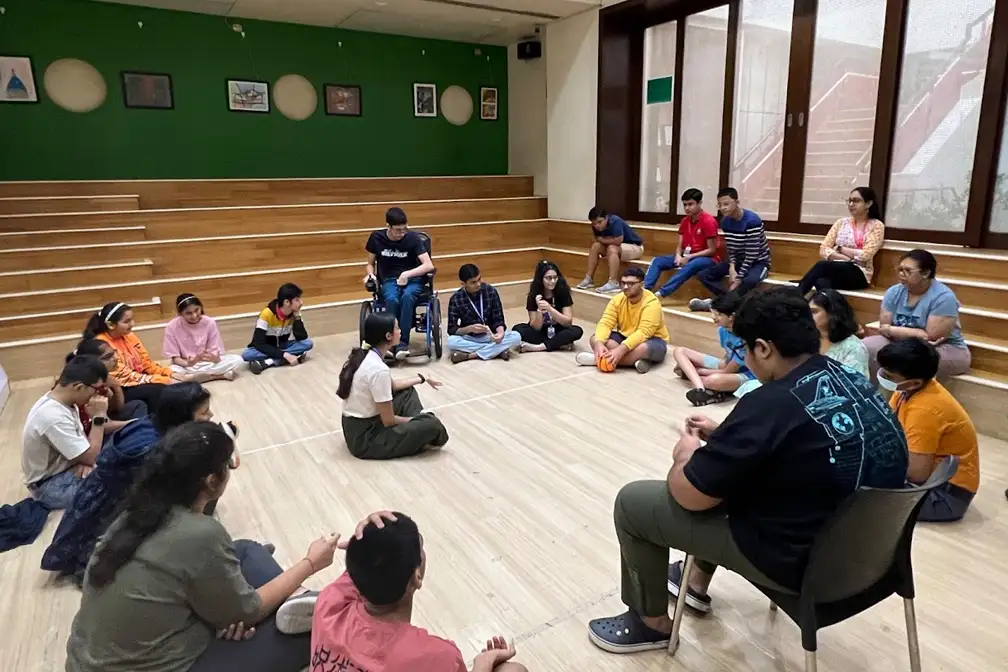
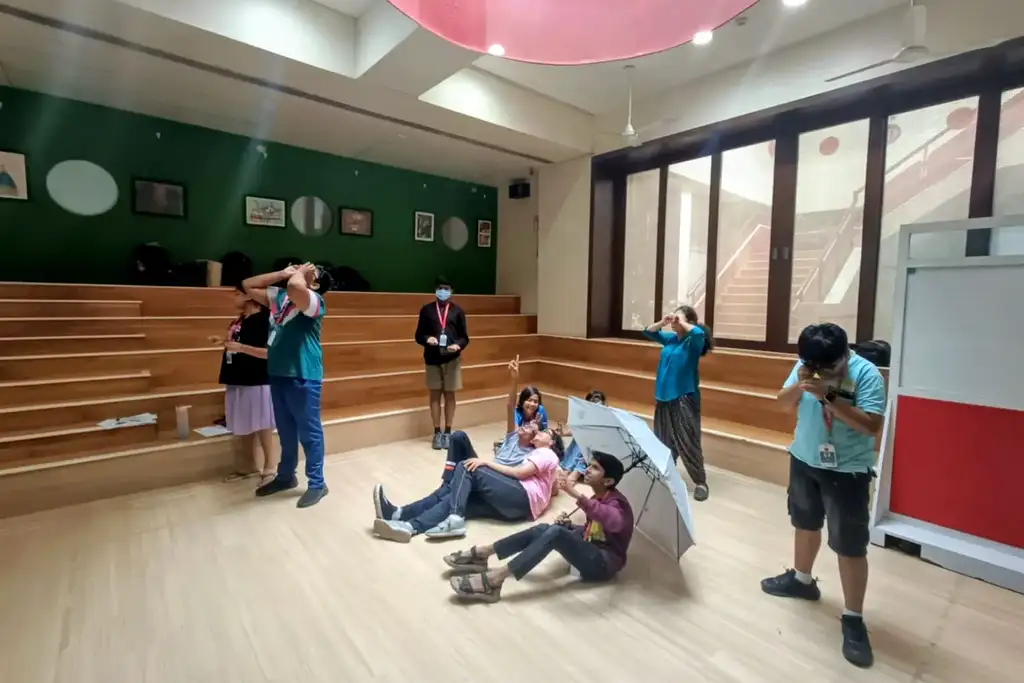
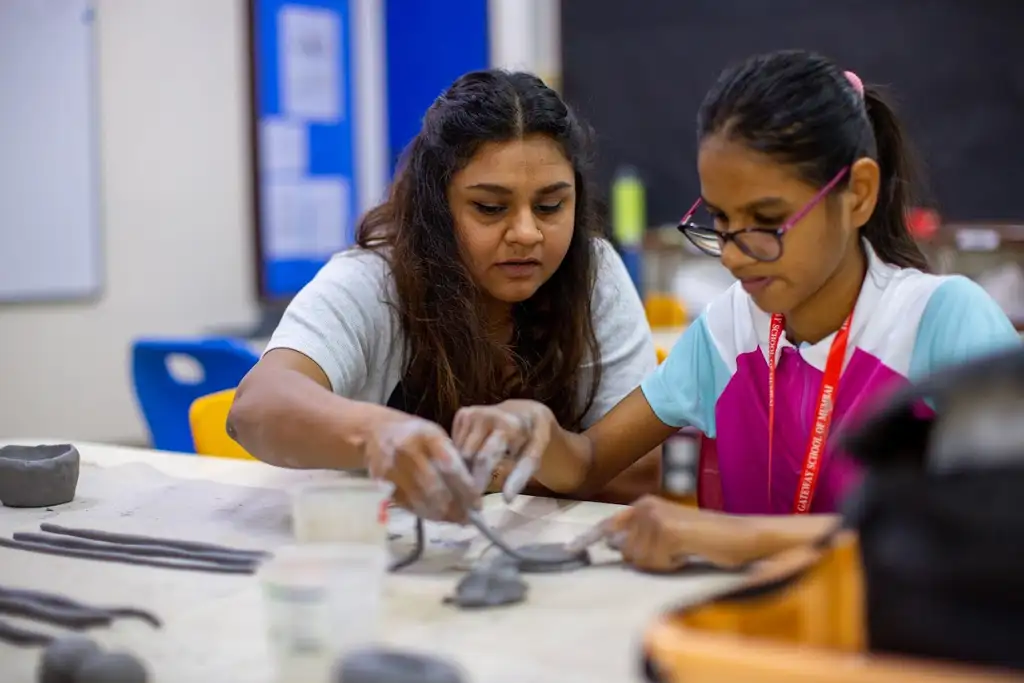
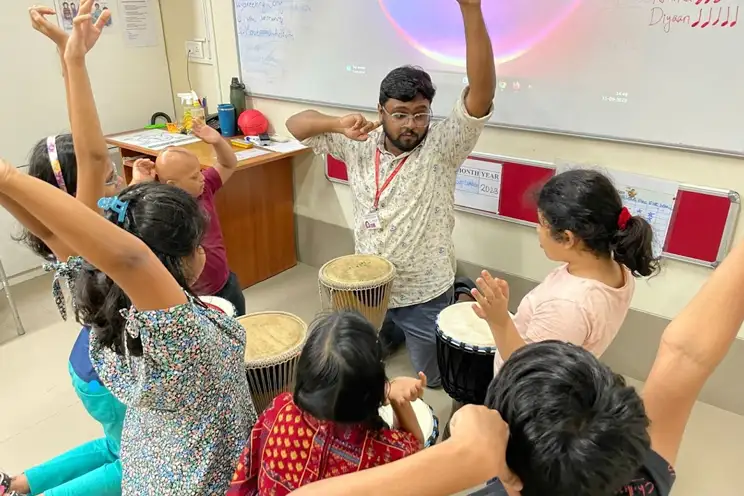
Arts
The arts are integral to holistic learning. At Gateway, learners engage weekly in visual arts, drama, and music, fostering artistic literacy as a means of communication, self-expression, cultural exploration, emotional well-being, and community engagement.
Grounded in evidence-based practices, our programme aligns with the National Common Core Arts Standards, NIOS, and Cambridge curricula. Through Multidisciplinary Learning Units (MLUs), the arts integrate seamlessly with core subjects, deepening understanding. Each unit is assessed, and learners regularly showcase their creative work in formal and informal settings.
We cultivate meaningful collaborations with local communities, artisans, and organisations, enabling learners to engage in socially relevant art projects that build empathy and social awareness. Visiting artists and creative professionals enrich learning by sharing their expertise, while field trips to galleries and cultural sites provide real-world context.
To nurture artistic growth and professional aspirations, for visual arts, learners exhibit their work annually in a professionally curated setup at school, while for performing arts, they present their work in a black box theatre and participate in touring productions. These experiences offer invaluable exposure to professional artistic practices.
Visual Arts
The visual arts programme nurtures learners’ ability to communicate uniquely, transforming ideas, emotions, and experiences into tangible forms. Through drawing, painting, and inventive practices, learners develop fine motor skills, self-confidence, and creative expression. Exposure to global contemporary artists broadens their perspectives, fostering originality and risk-taking.
In lower school, learners build foundational skills, refining motor coordination and exploring various mediums, from sensory elements to upcycled materials. This hands-on approach introduces them to the limitless possibilities of art-making.
Middle school deepens artistic understanding with exposure to influential artists, diverse styles, and structured studio practices. Learners refine techniques, explore design principles, and develop soft skills such as presenting and discussing their work.
In high school, learners specialise in fine arts disciplines such as painting, fibre arts, ceramics, thread art, and screen printing. This progression equips them with technical expertise and artistic confidence, preparing them for further exploration or professional pathways in visual arts.
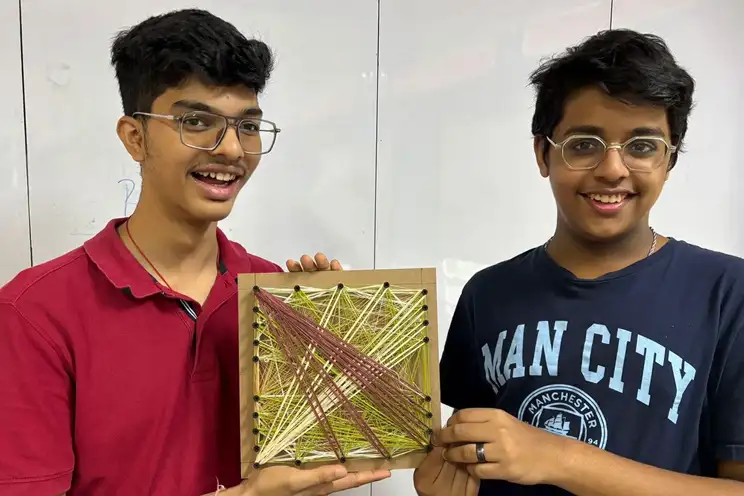
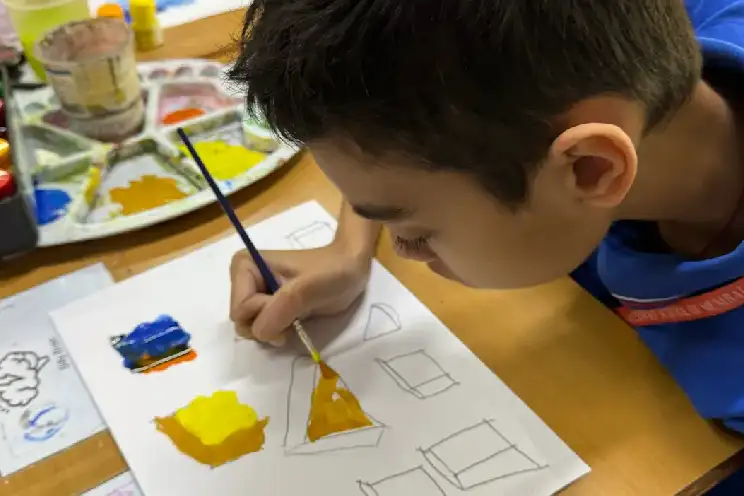
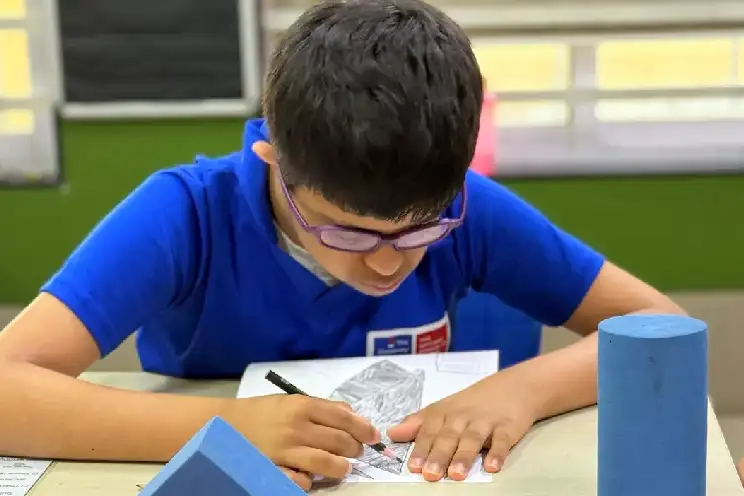
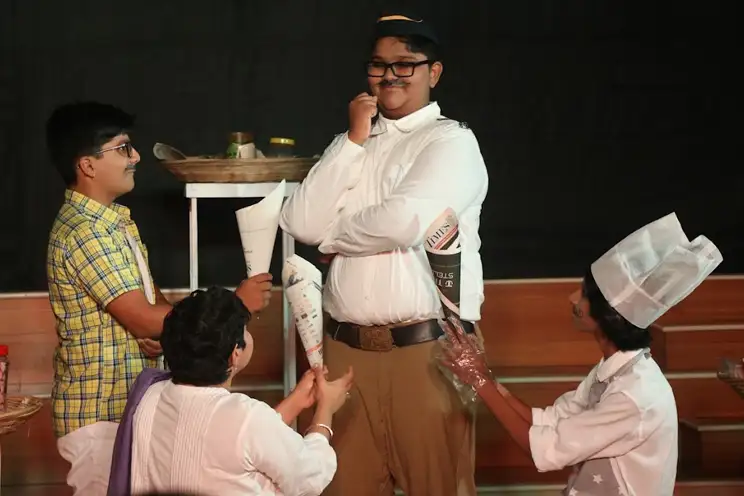
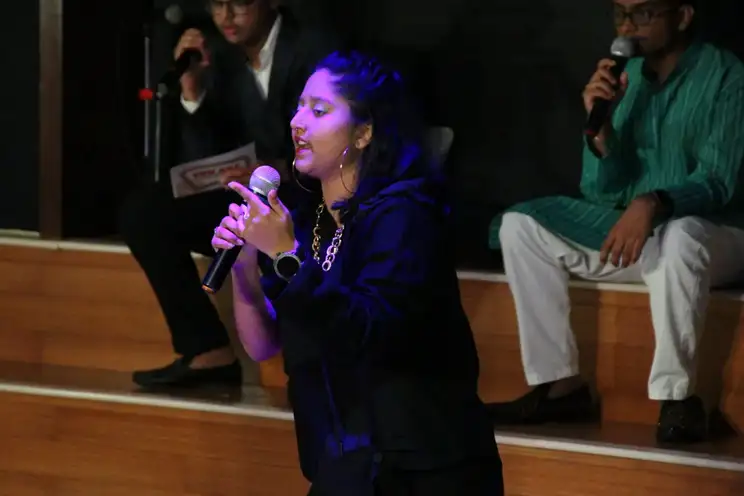
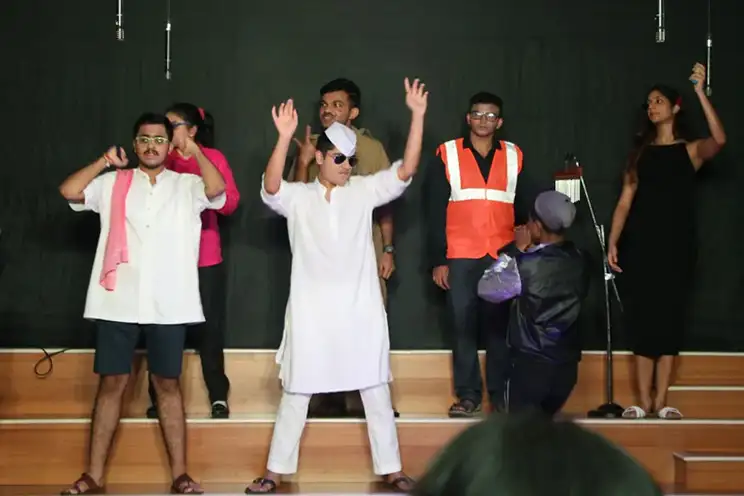
Performing Arts
Drama: In lower school, the drama programme focuses on learning through play and multi-sensory storytelling, using materials like clay, newspapers, and fabrics to spark creativity. This approach enhances problem-solving, risk-taking, and body awareness, which are key foundations for performing arts.
Middle school introduces foundational performance skills, covering stage directions, script analysis, ensemble building, puppetry, and physical theatre. Learners engage in immersive activities such as field trips, workshops, and live performances, while drama is integrated with MLUs through street plays, role-play, and improvisation, deepening subject understanding.
High school balances theatre-making as both process and product, collaborating with the Speech and Language Therapy team to develop communication, spatial awareness, and teamwork. The first term builds performance skills, while the second focuses on productions and collaborations with external artists and organisations.
Music: In lower school, the music programme integrates movement to support holistic development. Through engaging activities, learners refine motor skills, coordination, spatial awareness, and auditory processing while nurturing a love for music and creative expression.
Middle school expands learners’ understanding of world music, introducing rhythm, melody, harmony, and dynamics across diverse genres. They begin learning an instrument, developing technical skills and discipline, which they apply in a theatrical performance, collaborating as young musicians.
High school emphasises collaborative performance and the broader applications of music. In the first term, learners contribute as vocalists or instrumentalists, integrating live music into theatrical plays while refining ensemble coordination and stage presence. The second term explores music for well-being and self-expression, alongside composition analysis and cultural exploration, fostering both artistic and personal growth.
